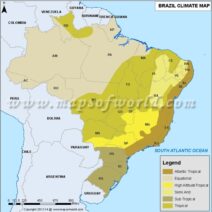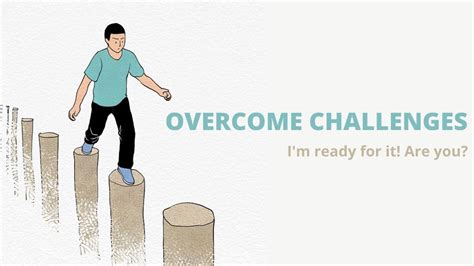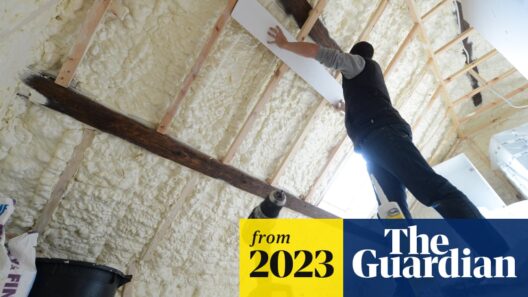The phenomenon of global warming presents an array of challenges that are reshaping the economic landscape of the United States. The intersection of environmental sustainability and economic stability is increasingly becoming a focal point of discourse. As climate change continues to escalate, the need for economic resilience is paramount. This exploration delves into the intricate dynamics of how the U.S. economy can adapt to the exigencies imposed by this global crisis.
Traditionally, economic resilience has been characterized by the ability of a system to withstand shocks and recover from disturbances. However, in the context of global warming, this definition evolves. It now includes the capacity to anticipate climate impacts, devise mitigation strategies, and embrace sustainable practices. The burgeoning recognition of the environmental economy unveils the necessity for adaptation not merely as an option, but as an obligation.
A salient observation is the increasing interdependence between the economy and environmental health. Natural disasters intensified by climate change—hurricanes, wildfires, flooding—have monumental implications for economic activity. Industries reliant on stable weather patterns, such as agriculture and tourism, face unprecedented volatility. Furthermore, infrastructure development is continuously besieged by the effects of these environmental perturbations, leading to exorbitant repair costs and necessitating significant investment in climate-resilient solutions.
One of the key avenues through which economic resilience can be fortified is by investing in renewable energy sources. Transitioning from fossil fuels to wind, solar, and hydroelectric power not only mitigates greenhouse gas emissions but also invigorates the economy. The renewable energy sector has demonstrated remarkable growth and job creation potential. According to various analyses, this sector has outpaced traditional energy industries in job growth rates, illustrating a crucial shift towards a sustainable economic model.
This transition also evidences a transformative potential within industries traditionally driven by fossil fuels. Oil and gas corporations are increasingly diversifying their portfolios to encompass renewable ventures, aligning their business models with environmental imperatives. This metamorphosis engenders a dual advantage: it curtails dependency on volatile fossil fuel markets while adhering to emergent environmental regulations aimed at combatting climate change.
Moreover, the agricultural sector epitomizes another salient instance of adaptation. Climate-resilient practices, such as regenerative agriculture, present innovative methods to enhance soil health, insulate crops from extreme weather conditions, and improve overall yield sustainability. These methods not only bolster food security but also augment the economic viability of farming, ensuring that agriculture remains a cornerstone of the U.S. economy amid climatic uncertainties.
Furthermore, urban areas, where vast populations reside and economic activities are concentrated, face unique challenges. Smart urban planning integrates sustainability into new developments, emphasizing green spaces, eco-friendly transportation, and water resilience. The concept of a ‘sponge city’—a municipality designed to absorb and manage rainfall through permeable surfaces and extensive green infrastructure—illustrates how urban centers can adapt to the exigencies of climate change while fostering economic prosperity. By enhancing infrastructure in anticipation of adverse weather events, cities can mitigate the fiscal impacts of disaster recovery, thus preserving economic stability.
One must also consider the role of policy in shaping an economy resilient to climate change. Legislative frameworks that endorse sustainable practices and incentivize green technology adoption are critical. Federal and state governments must galvanize efforts to create financial mechanisms—such as tax credits and public funding for research and development—that propel industries towards a more sustainable trajectory. The participation of the private sector in these initiatives is crucial; businesses today must recognize that sustainability is not merely a trend, but a fundamental component of long-term viability.
Investment in research and development catalyzes innovation, creating new industries and market opportunities. The focus on climate solutions stimulates entrepreneurial activity, enabling the emergence of startups dedicated to clean technologies and sustainable products. This dynamic fosters a culture of innovation, which is indispensable in navigating the multifaceted challenges posed by global warming.
Nevertheless, the adaptation process is fraught with obstacles. Social equity must remain at the forefront of economic resilience efforts. Vulnerable communities disproportionately bear the brunt of climate change’s impacts, exacerbating existing socioeconomic disparities. The pivot towards resilience must embrace inclusivity, ensuring that all demographics possess access to resources, information, and opportunities in the green economy. This guarantees that the transition is not only sustainable but equitable, ultimately reinforcing the societal fabric essential for economic resilience.
In summary, the U.S. economy’s fortitude in adapting to the challenges imposed by global warming hinges upon a multi-faceted approach. The symbiotic relationship between economic growth and environmental sustainability must be nurtured through strategic investments and innovative practices that bridge industries and communities. The adoption of resilient practices across various sectors stands as a testament to the United States’ commitment to tackling climate change. By harnessing the potential of renewable energies, innovative agricultural practices, and robust policy frameworks, the nation can navigate the uncharted waters of a warming world, thereby ensuring economic resilience and sustainability for generations to come.







